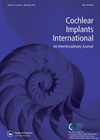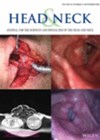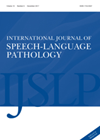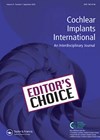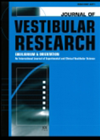
Journal Reviews
Satisfaction levels in elderly patients with cochlear implants
Hearing rehabilitation in the elderly is of utmost importance as it is associated with depression and dementia in this age group. Cochlear implantation is indicated for hearing-impaired individuals who do not derive adequate benefit from conventional hearing aids. In this...
CI outcome measures and different languages
Outcome measures for hearing rehabilitation strategies in children are the subject of endless debate. The underlying problem with measuring outcomes in this population is delineating the extent to which development (which is in itself variable) and hearing ability (usually the...
Facial nerve anatomy in the temporal bone
Knowledge of the facial nerve anatomy during otological surgery is crucial in avoiding an iatrogenic injury to the facial nerve. In this study, the authors investigated the anatomical relationship between the tympanic portion of the facial canal (FC) and the...
Hidden disabilities and cochlear implantation under 12 months of age
There has been a global shift to providing children with severe-profound deafness cochlear implants (CIs) before they are 12 months old. Early intervention is critical and one of the overriding factors in successful outcomes for children with CIs. Early implantation...
CATE in people with dementia
Behavioural hearing tests may be difficult to perform for people with dementia. The aim of this study was to investigate if the cortical automatic threshold estimation (CATE) may be used as an alternative to the pure tone audiometry test. Six...
Role of imaging in unilateral sensorineural hearing loss
Recent understanding of the significance of unilateral hearing loss in children for language development calls for extensive investigations and early rehabilitation. This retrospective study of 90 children with unilateral hearing loss with high resolution CT scans and MRI revealed that...
Predicting the need for salvage laryngectomy
The treatment of laryngeal cancer has seen a shift towards organ preservation strategies with non-surgical treatment offering equivalent survival outcomes. Nonetheless, salvage total laryngectomy (SLT) remains an important curative management option in cases of treatment failure or recurrence. The authors...
How long is too long? Waiting times for speech and language therapy
Waiting lists are a reality of clinical practice, and many health and social care professionals become used to having to cope with this. The authors of this paper addressed this issue by examining written submissions to the 2014 Senate Inquiry...
Quality of life in adolescence
Adolescence can be a difficult time and the added complexity of a hearing loss can exacerbate feelings during this period. In the literature, there are mixed findings that show while some children with hearing loss score poorly on some aspects...
Dead regions in patients with cochlear implants
The very nature of a dead region (DR) in a cochlea means that they are often found in patients who are eligible for cochlear implants. However, a variety of different hearing configurations are found in those with DRs because of...
Two reliable endoscopic myringoplasty techniques for anterior tympanic membrane perforations
Difficulties that arise in closing anterior perforations in the tympanic membrane are due to a narrow isthmus of the external auditory canal and an anterior wall bulge which obscures the most anterior part of the tympanic membrane. The conventional microscopic...
Impaired vestibulo-ocular reflex (VOR) gain correlates with hearing loss in vestibular schwannoma
The lack of correlation between the size of vestibular schwannoma (VS) and degree of hearing loss and vestibular function tests is well known. In this retrospective study, the focus was on the correlation between VOR gain of semicircular canal function,...



